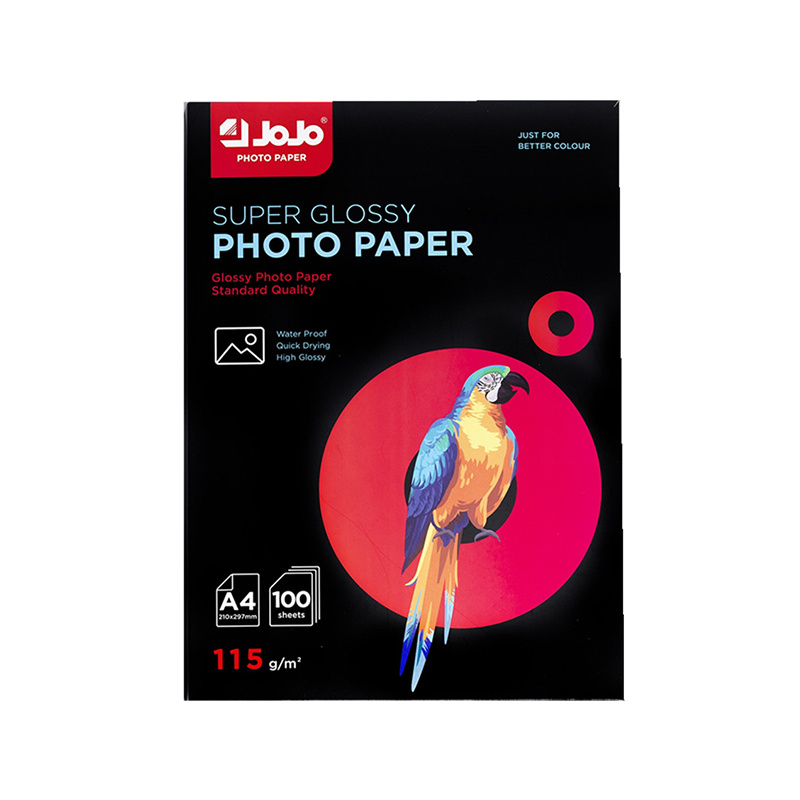If you need any help, please feel free to contact us
Static Control In High-Speed Digital Printing Media
One critical yet often overlooked factor is static electricity. Static buildup during the printing process can advance to paper misfeeds, image distortion, and post-print stacking issues. This challenge becomes even more pronounced when working with coated substrates such as glossy self adhesive paper, photo glossy sticker paper, and A4 glossy photo paper 180gsm.

Understanding Static in Digital Printing
Static electricity is the result of an imbalance of electric charges within or on the surface of materials. In digital printing, friction between the printer components and the paper can generate static charges. This is especially common in high-speed environments where materials are fed through rollers at a rapid pace. If the paper accumulates too much static charge, sheets can stick together, pilot to double-feeding or jams, and sometimes skewed printing or toner/ink misalignment.
Materials with a glossy coating—like photo glossy sticker paper—are particularly prone to static buildup. The smooth surface tends to retain charges more easily than uncoated or matte surfaces. In the case of glossy self adhesive paper, the problem is twofold: the coated face layer and the backing liner both contribute to static potential during separation.
Impacts on Printing Performance
Static buildup can have several negative impacts during and after the printing process. For example:
Paper Feeding Errors: In automatic feeders, static can cause two or more sheets to stick together. This affects print alignment and wastes material.
Image Quality Issues: Charged paper can deflect ink droplets or toner particles, pilot to image distortion.
Stacking and Finishing: After printing, static-charged sheets may repel or attract each other unpredictably, creating issues during cutting, lamination, or binding.
When printing on A4 glossy photo paper 180gsm, the higher paper weight adds another layer of complexity. Thicker paper tends to hold its shape more rigidly, which can combine with static to create challenges in sheet feeding and stacking, especially in multi-pass print jobs.
How Glossy Coated Papers Contribute to Static
Glossy coated substrates are designed to produce vibrant and sharp images by less ink absorption into the paper base. However, the synthetic components in the coating, such as polyethylene or resin layers, lack the conductivity of natural fibers. As a result, these papers do not allow static charges to dissipate easily. This is a key reason why glossy self adhesive paper and photo glossy sticker paper are more sensitive to environmental factors like humidity and temperature, both of which influence static behavior.
Moreover, in the case of glossy self adhesive paper, the adhesive layer can further increase static-related problems. During the peeling process or in label printers, the backing liner and the adhesive coating are separated mechanically, which creates friction and adds to static charge accumulation.
Static Control Techniques
To manage static in high-speed digital printing, both environmental and material-based strategies are used:
Humidity Control: Maintaining a relative humidity of 40-60% in the print room reduces static generation. Dry air increases the risk of charge buildup, particularly for coated materials.
Anti-Static Devices: Ionizing bars, brushes, or air blowers are installed on printing machines to neutralize surface charges on media before and after printing.
Paper Conditioning: Before printing, storing paper—especially coated types like A4 glossy photo paper 180gsm—in the print environment for several hours helps equalize temperature and humidity, less static.
Surface Treatment: Some premium papers include anti-static treatments in the coating process. While not universal, this is more common in professional-grade photo glossy sticker paper.
Proper Handling: Operators should avoid unnecessary rubbing or sliding of paper stacks. Handling each stack with care, with less surface friction that generates static.
Static control remains an essential consideration in high-speed digital printing, especially when using glossy, coated materials like glossy self adhesive paper, photo glossy sticker paper, and A4 glossy photo paper 180gsm. While technology continues to advance, success in high-output environments depends on a practical understanding of static behavior and thoughtful workflow adjustments. Integrating static mitigation practices not only improves print quality but also reduces downtime and material waste, making it a valuable area of focus for any print production team.

 English
English Español
Español 中文简体
中文简体 Português
Português

